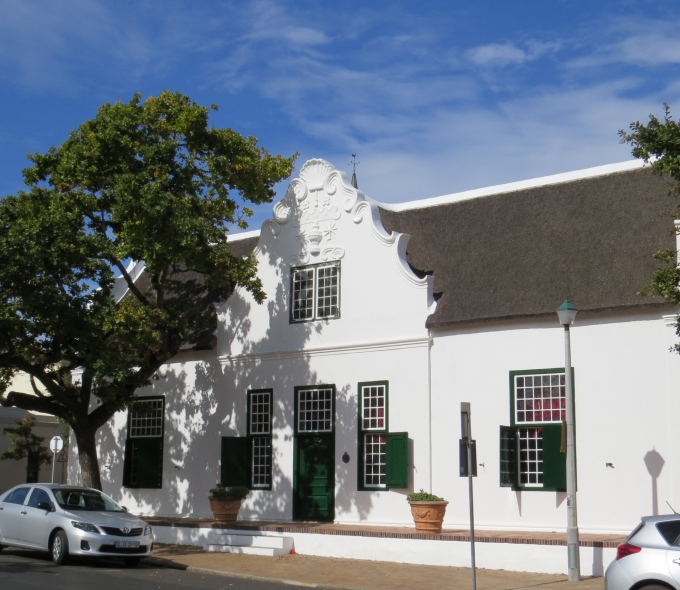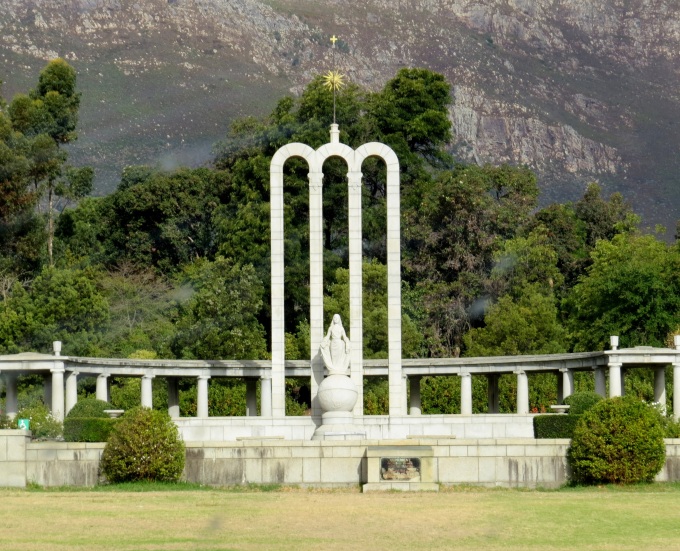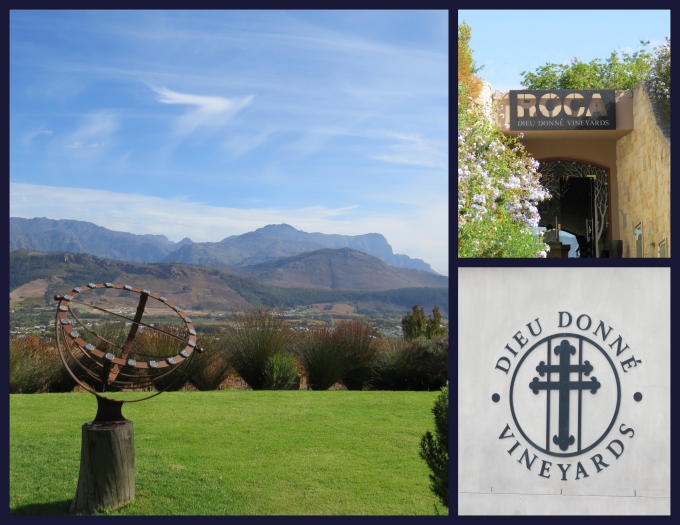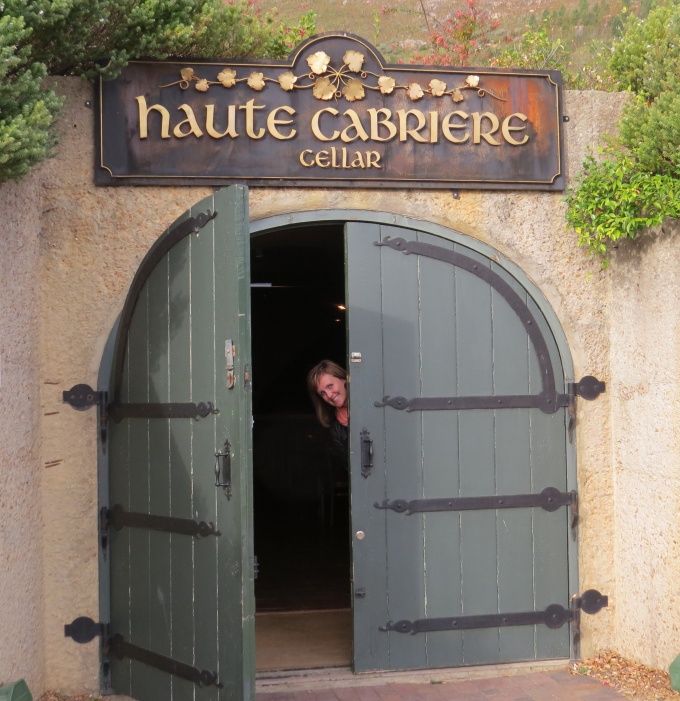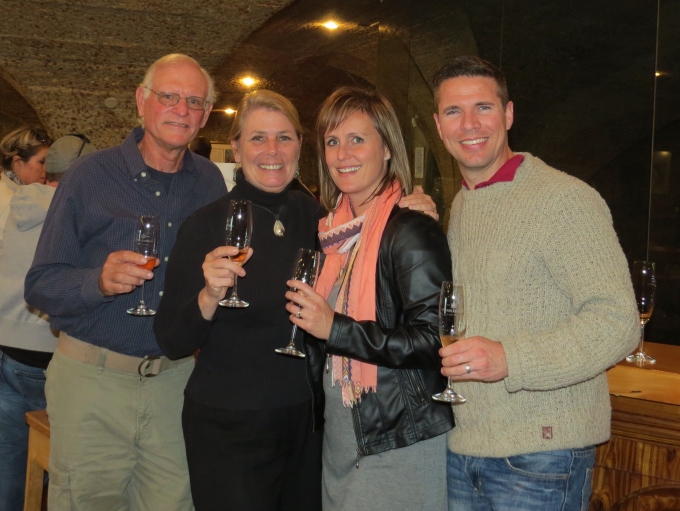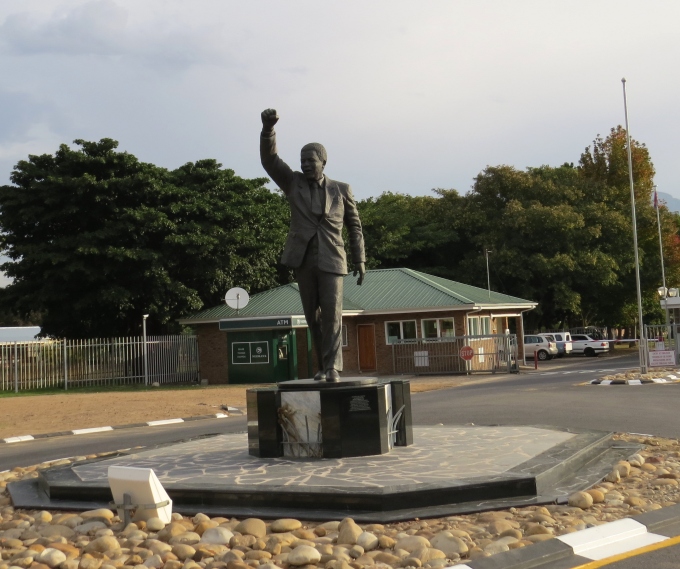A Trip to the Cape Winelands
/Well, the 90-day rule just kicked in. Out of the blue, we received an email from Capetonians, Benjamin and Belinda, asking if we'd like to go for a ride with them out of the city to see the countryside and perhaps do a little wine-tasting. They'd been following our blog for awhile and thought we'd enjoy a respite from the marina and the frustration of boat repairs. Boy, were they ever right! We'd spent a day in South Africa's winelands in 2007 and drove through on our trip back from Knysna this year, but we hadn't really explored the area … especially not with locals.

They picked us up at the yacht club promptly at 11am and we headed to Stellenbosch. Since we'd never met them before other than an email and a quick chat on the phone, it was a crap shoot as to whether our personalities would be compatible with theirs. They were a young couple … younger than our kids, in fact … hanging out with an old(er) couple. Well, our fears were unfounded. We chatted and talked and shared stories from the git-go. They were just starting a new family, had jobs, and a new house, but they had the dream of sailing off into the sunset sooner, rather than later. We had lots to talk about and beyond sailing talk, they were good tour guides.
Only about 50km (30mi) east of Cape Town, Stellenbosch was founded in 1679, the second oldest European settlement in the Western Cape. We strolled around this historic town with its pleasant oak-lined streets. Boutiques and galleries, restaurants and cafes were all bustling. Street art was everywhere.
Cape Dutch architecture is notable here featuring its white-washed walls, thatched roofs and ornately embellished gables.
With its fertile soil and Mediterranean-like climate (moist, cool winters; hot, dry summers), early settlers planted vines shortly after arriving. They had their priorities right! The Stellenbosch Wine Route was South Africa's first established wine route and boasts more than 150 members. The area is lush and scenic with a backdrop of the Stellenbosch, Jonkershoek and Simonsberg mountains. We stopped at Tokara for our first wine-tasting of the day. Alvin, our host, poured us a Sauvignon Blanc, then a Chardonnay, then two red blends, all of which were excellent. We munched vineyard-grown olives while enjoying the generous “tastes” of varietal wines.
In 1690, some French Hugenot refugees settled in Franschhoek (French Corner) and immediately set about putting their French viticultural skills to work. The ornate Hugenot Memorial is dedicated to the cultural influences contributed by this French Hugenots to the Cape Colony.
The venue for lunch was the Roca restaurant at the gorgeous Dieu Donné vineyards. Set high in the hills, the views were outstanding as we sipped wine with pleasant company and enjoyed a gourmet lunch of the line catch of the day and roast duck.
We lingered over lunch and the day was waning by the time we arrived at Haute Cabriere. We entered the cavern tasting room through large wooden doors.
This was a good place for our last tastings of the day. We tried two brut MCCs (method cap classique) … champagne! And finished with a Ratafia, a white, sweet fortified wine (brandy) that was perfect for the end of the day. I'm not sure we could have indulged in further tastings.
On our way home from Franschhoek, Benjamin suggested stopping at the Drakenstein Correctional Centre, famous for the prison where Nelson Mandela spent his last days of incarceration before his release in 1990. A large statue of Mandela, arm raised in the Black power salute, stands in the entrance to the prison.
The day ended with hugs and an invitation for dinner aboard Nine of Cups. Gotta love this 90-day rule. By the way, Belinda is a native Afrikanner and we learned a new, very versatile Afrikaans word: ja nee (YAH-neyah), literal translation yes/no, but it's common form of agreement. “We really enjoyed our day in the winelands, didn't we?” Ja nee!



